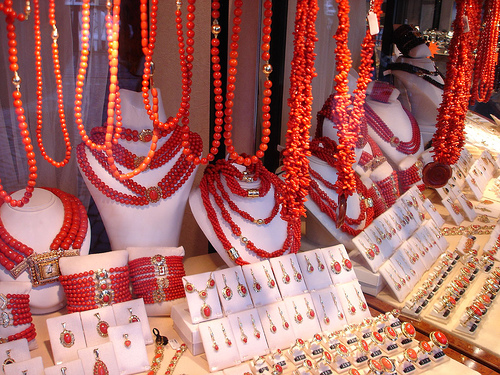Red and pink coral beads are popular in handmade jewelry as well as in couture jewelry lines. Coral beads are beautiful, but unsustainable harvesting methods mean they’re also not so great for the planet.
Coral reefs are actually living things. They grow incredibly slowly – less than one millimeter per year. Some of these reefs that we’re exploiting for fashion purposes live to be up to a hundred years old! The reefs provide critical habitats for marine life. Trade in coral beads for jewelry is a multi-million dollar industry, and harvest yields have been on the decline due to a decline in coral population. At this year’s Convention on International Trade in Endangered Species (CITES), U.N. delegates voted down a proposal to limit coral trade and protect these fragile habitats. David Allison from ocean conservation group Oceana commented on the decision:
What You Can Do
The easiest thing to do is avoid coral in your jewelry-making. There are so many lovely alternatives out there! If you really need coral to finish a piece, maybe you can hunt down a vintage strand to harvest in your craft room?
Red and pink coral were not given the trade protections promised during the last CITES Conference more than two and a half years ago.
These corals are increasingly harvested to support the growing demand for jewelry and souvenirs. The unregulated and virtually unmanaged collection and trade of these 31 species is driving them to extinction.
The failure at CITES only applies to pink and red coral. Black coral is already protected under CITES, so you can feel a bit better about using it in your work.
I’ve heard of coral that is sustainably farm-raised but couldn’t find any certifications to make sure that you’re getting what you think you are. Fish farming has its own set of environmental issues, though, so you might be better off just avoiding coral all together. What do you guys think?
Image Credit: Creative Commons photo by andrew3000
